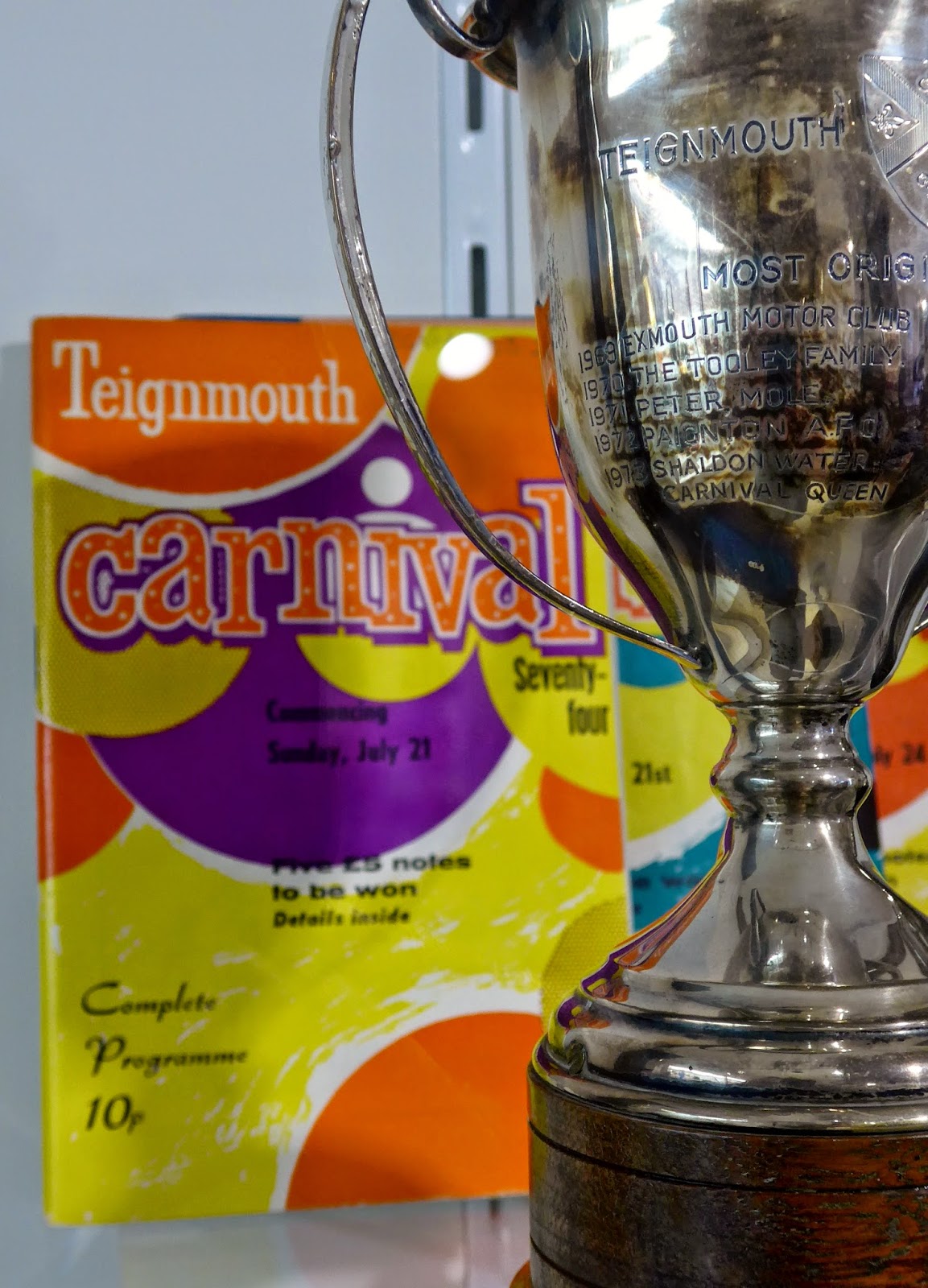I'd been waiting to visit Newton Abbot Museum for a while. Waiting until we next went to Devon, to see my mum in the Easter holidays, as quite a few local museums in Devon are closed for the winter.
It didn't bode well at first when, after we'd parked very close by, we asked someone where it was and they "didn't even know Newton Abbot had a museum".
It's proper name is Newton Abbot Town & Great Western Railway Museum.
It was so well worth the wait.
It was one of those museums that gives you a tingly feeling, a sense of excitement as it draws you in.
We were given the warmest welcome, in the smallest room, with the largest fire surround.
This is the Sandford Orleigh overmantle. Made in the sixteenth century from over twenty carved oak panels. It has been recently restored through the Heart of Oak project.
We were invited to see if we could work out which wooden figures were new and which were original. You could sort of work it out. This didn't detract from the wonder of it. We just gained great admiration for the craftsman who re-carved the missing parts.
In Newton Abbot Museum there have been other craftsmen at work, making things from wood. This time an eighteenth century replica diving machine, designed to be used to recover valuable cargoe from sunken ships.
John Lethbridge, a pretty unsuccessful local wool merchant, designed and used the original machine, becoming a successful salvage diver in his forties.
This automation helps you get the picture.
However it could go down to depths of 22 metres.
"Apparently people died because of the pressure they experienced on their arms."
Not as far as a Sperm Whale,
and a military submarine knocks spots off that, at 3000 metres.
Fortunately you don't have to go to any depth for the obligitory museum selfie.
Absorbed in John Lethbridge's story, I lost the kids but I could hear bells, train signals.
I followed the sound to the most amazing room.
Under the watchful eye of an encouraging volunteer, signals were being pulled...
...and bells rung.
There weren't any tracks to move but, spot the difference,
the signal moved.
I loved this signal. Undeterred by having to fit a full-size train signal into a downstairs room of, what was effectively, a large town house, they just dug down to get it to fit in.
We had such fun in this room with civil engineer dad sharing his stories of times
on the tracks.
"I've pulled those levers for real, in a signal box in Sussex. You have to put your weight behind them and pull really hard. They even use a tea-towel in an actual signal box, to protect your hands."
"I used one of those horns, working on the tracks, you have to blow really hard. When you hear the horn 'blow up' you stand clear, there's a train coming. Site wardens are trained to 'blow up', to keep look-out. Site wardens are a 'walking, talking fence'". Yes really.
That's the horn on the left.
Dad's can be quite boring and they're more impressed with the Brunel hat!
The GWR room is jam packed with social history and stories of the impact the railway had on the local area.
My mum and I loved this book.
These photographs, the volunteer told us, were the views from both sides of the railway, so it sort of makes sense to have one view upside down.
Of course, we had to find Teignmouth. Still recogniseable today.
"There's the Ness and Shaldon Bridge."
A train spotters paradise. Even photos in 3D.
They really did look three dimensional, but not digitally photograph-able.
Then there's Newton Abbot's history of the First World War.
And the 'Noteable Newtonians', of which there are many.
What a tour, from sixteenth century wood carvings to the bottom of the ocean
to Brunel's Great Western Railway.
I would like this post to be widely read, not so much for the benefit of my blog, but for the benefit of this most lovely museum, telling genuinely local stories of achievement and history. Staffed by volunteers with such energy and enthusiasm. It does regional museums and Newton Abbot proud.
Check out the Newton Abbot Town & G.W.R. museum website, here, for opening times
as well as a wealth of information about what they've been up to.
Open mid-March until October.
And if you bump into a local who, "didn't even know Newton Abbot had a museum",
take them with you, they should know about it.
































































